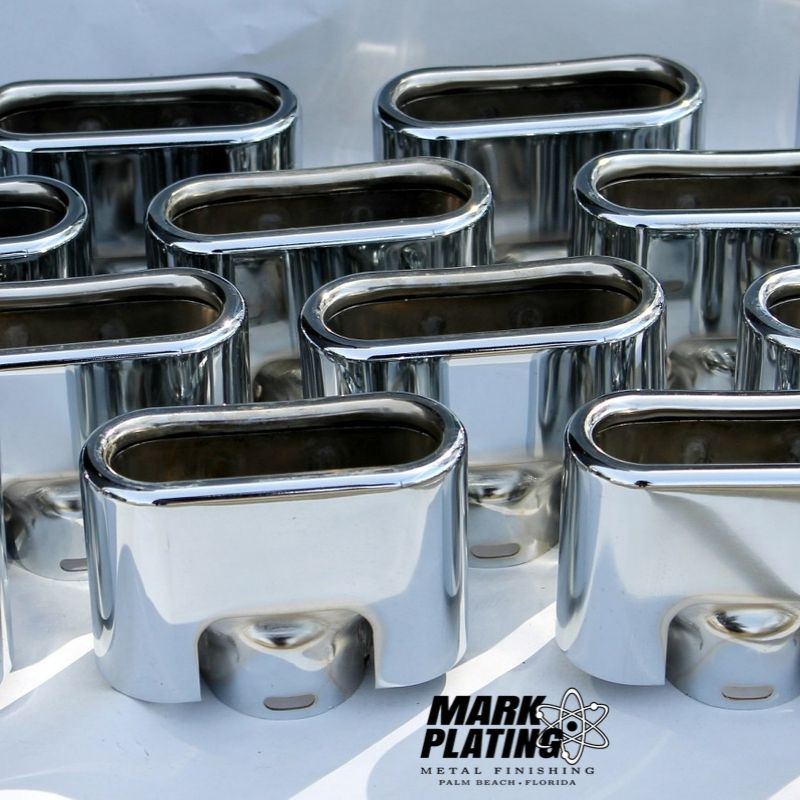A Comprehensive Analysis of Chrome Plating
The world is filled with an abundance of beneficial minerals; these can be utilized for various purposes ranging from essential utilities to decorative elements. Among all such components, chromium holds a unique place due to its anti-corrosive & reflective properties. The automobile industry leverages such qualities for a technique known as electroplating. It is a process coating a thin layer of a chemical element onto a metal object for aesthetics and functional purposes. But, not all the procedures are equal, so this content provides detailed insight into that approach and its advantages over other similar methods.
Diverse In-Kind
As mentioned earlier, the process depends upon some application & a level of durability required. So, based on that criteria auto chrome plating differs into two types. The first one is an engineered depositing; it is applied for resistance and durability purposes. Hard coating is used on components such as piston rods, hydraulic cylinders & mold surfaces.
The second kind is known as a decorative depositing. It is applied for decorative purposes rather than functional properties. By using this method wheels and bumper can achieve a high level of reflectivity along with minimal resistance. Metal surfaces gain smoothness in texture by performing galvanization coupled with a nickel bonding.
Fundamental Utilization
There is a multitude of applications for depositing; primarily, the automobile industry employs this process to provide a more surface capable of handling excessive oil, dust & wear damages. Most aluminum structures tend to develop rust over time, so by performing coating, the progress can be eliminated.
Such characteristics allow chrome to be also utilized in other mechanical components like screws, bolts & tool molds. Many aircraft constructions involve the intervention of this element for better protection against external ailments. Military graded equipment also uses chemical alloys compounds for engineering-oriented reasons.
Restoration works are a primary application field of chromium; old metals could gain new properties and decorative features by performing a depositing. It is a complex process starting with cleaning, buffing, dipping in acid & element galvanizing. Such a method will remove blemishes to provide a smooth & shiny surface.
Crucial Advantages
Chrome plating is a widespread practice owing to its plethora of benefits; this includes suitability for a multitude of metals. Every compound possesses a different set of structural configuration, but regardless of the cases, these methods can be applied to all alloy elements.
The process is relatively simple; it has extreme adhesive properties and could be applied in even low temperatures, making that procedure the front-runner for all engineering, and mechanical applications.
Its reflective properties offer great features, which are ideal for decorative purposes. Even a rusty old metal can be transformed into a decorative & luminous element through chromium electroplating.
Diverse In-Kind
As mentioned earlier, the process depends upon some application & a level of durability required. So, based on that criteria auto chrome plating differs into two types. The first one is an engineered depositing; it is applied for resistance and durability purposes. Hard coating is used on components such as piston rods, hydraulic cylinders & mold surfaces.
The second kind is known as a decorative depositing. It is applied for decorative purposes rather than functional properties. By using this method wheels and bumper can achieve a high level of reflectivity along with minimal resistance. Metal surfaces gain smoothness in texture by performing galvanization coupled with a nickel bonding.
Fundamental Utilization
There is a multitude of applications for depositing; primarily, the automobile industry employs this process to provide a more surface capable of handling excessive oil, dust & wear damages. Most aluminum structures tend to develop rust over time, so by performing coating, the progress can be eliminated.
Such characteristics allow chrome to be also utilized in other mechanical components like screws, bolts & tool molds. Many aircraft constructions involve the intervention of this element for better protection against external ailments. Military graded equipment also uses chemical alloys compounds for engineering-oriented reasons.
Restoration works are a primary application field of chromium; old metals could gain new properties and decorative features by performing a depositing. It is a complex process starting with cleaning, buffing, dipping in acid & element galvanizing. Such a method will remove blemishes to provide a smooth & shiny surface.
Crucial Advantages
Chrome plating is a widespread practice owing to its plethora of benefits; this includes suitability for a multitude of metals. Every compound possesses a different set of structural configuration, but regardless of the cases, these methods can be applied to all alloy elements.
The process is relatively simple; it has extreme adhesive properties and could be applied in even low temperatures, making that procedure the front-runner for all engineering, and mechanical applications.
Its reflective properties offer great features, which are ideal for decorative purposes. Even a rusty old metal can be transformed into a decorative & luminous element through chromium electroplating.


Comments
Post a Comment